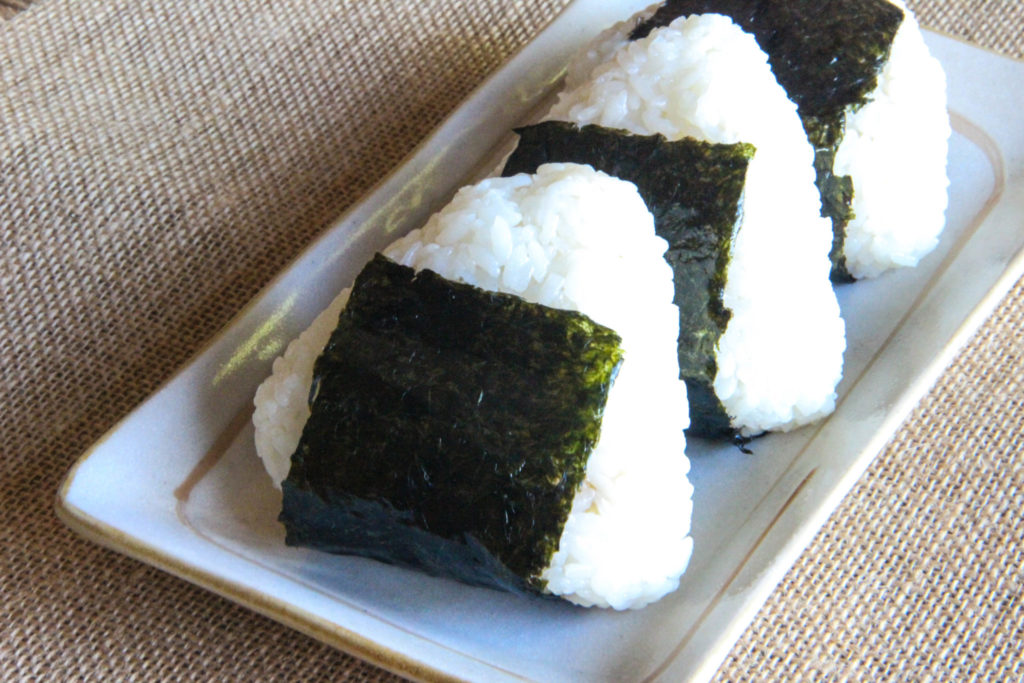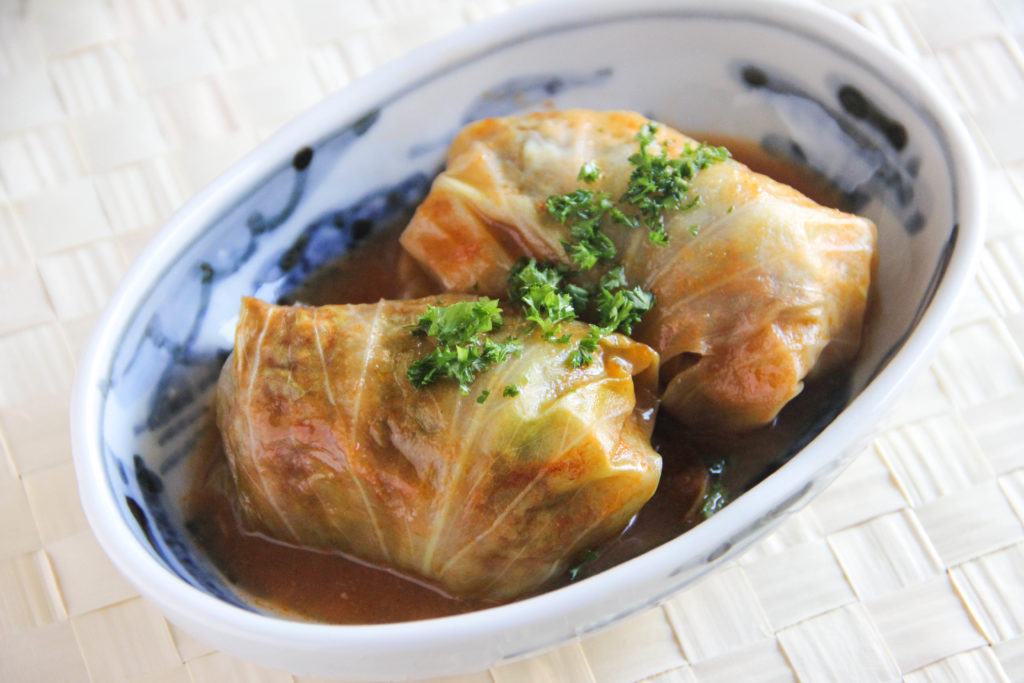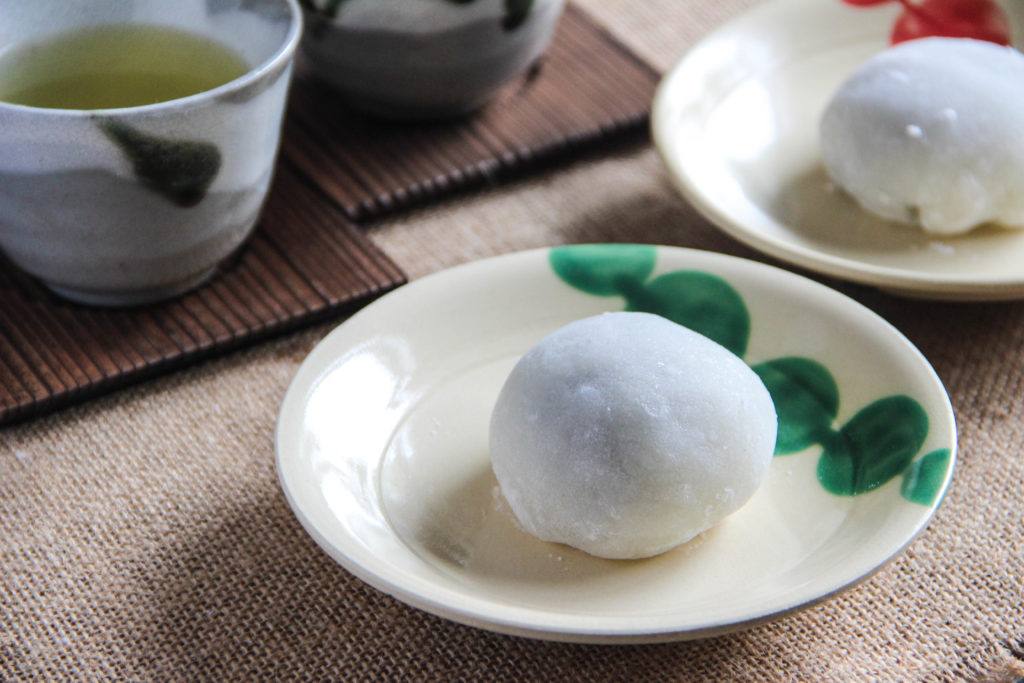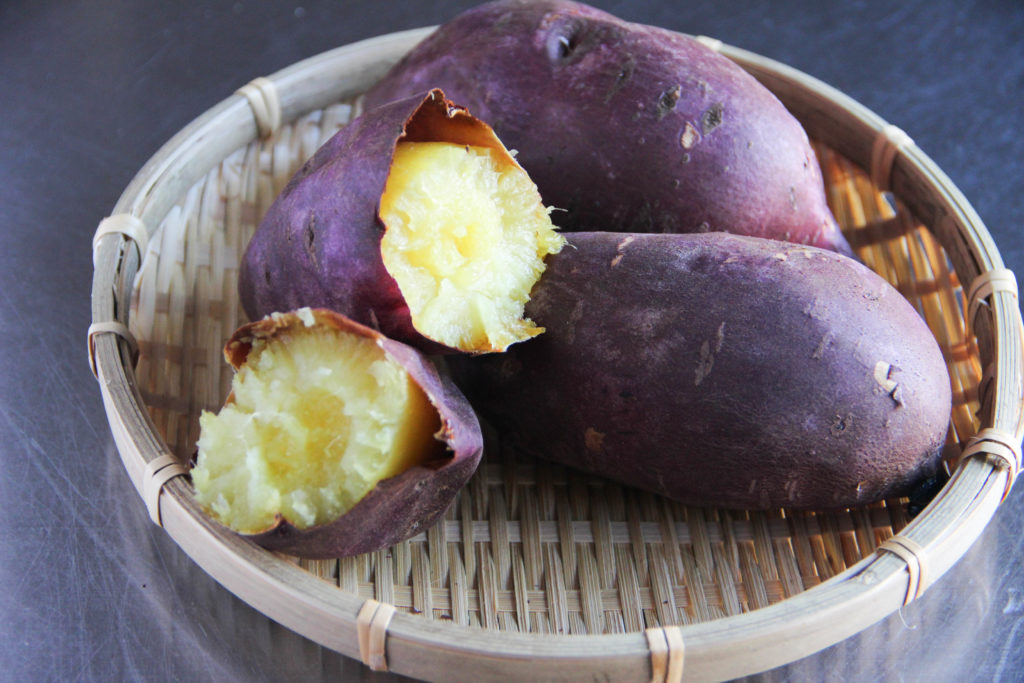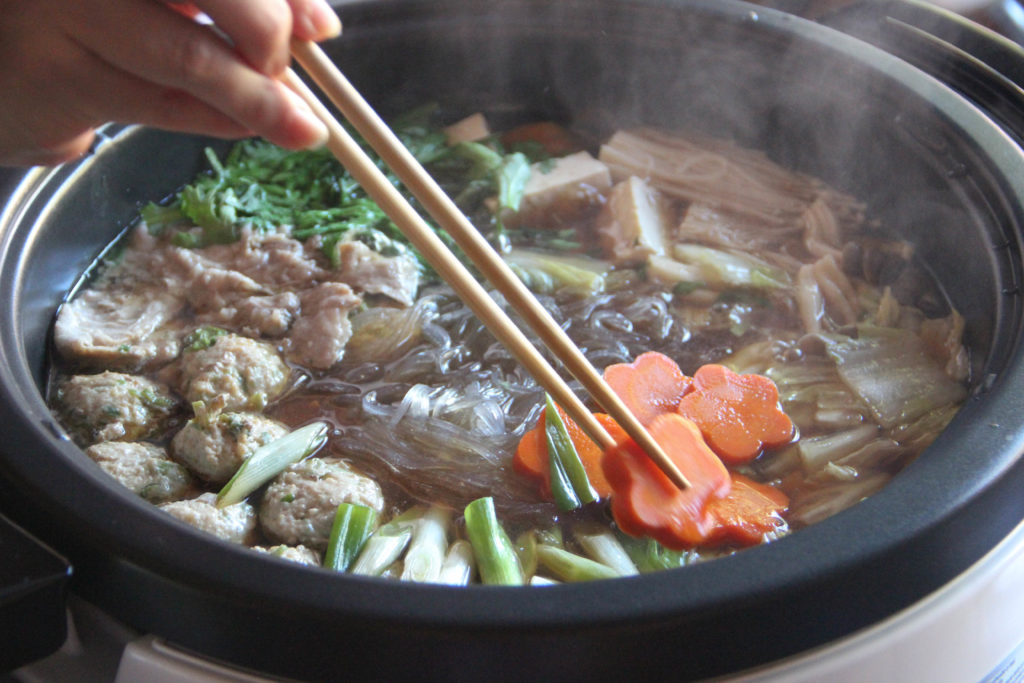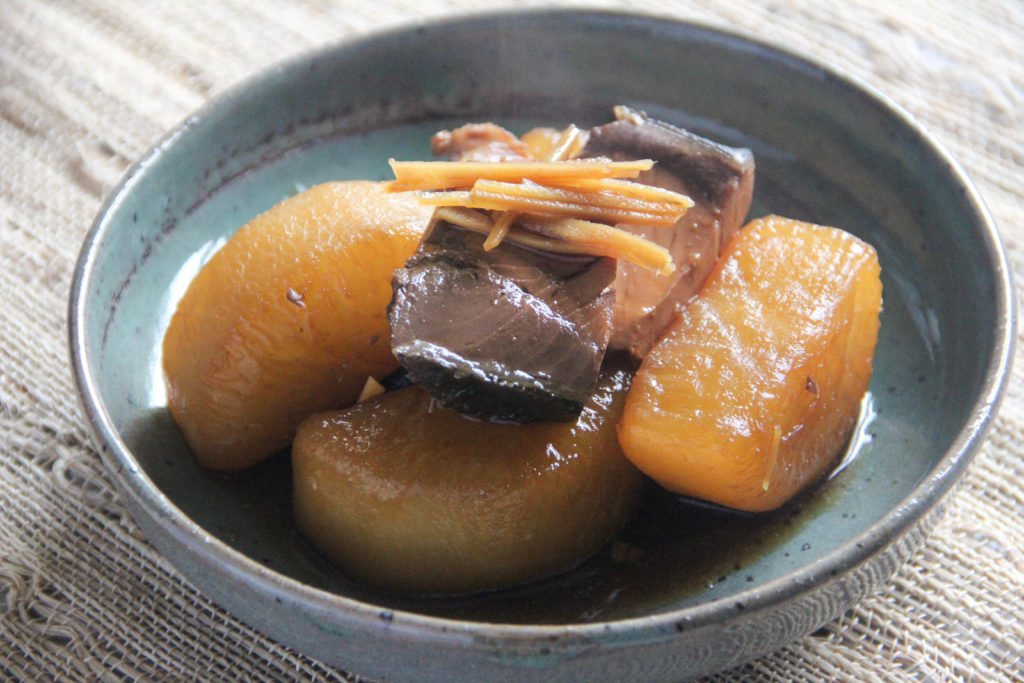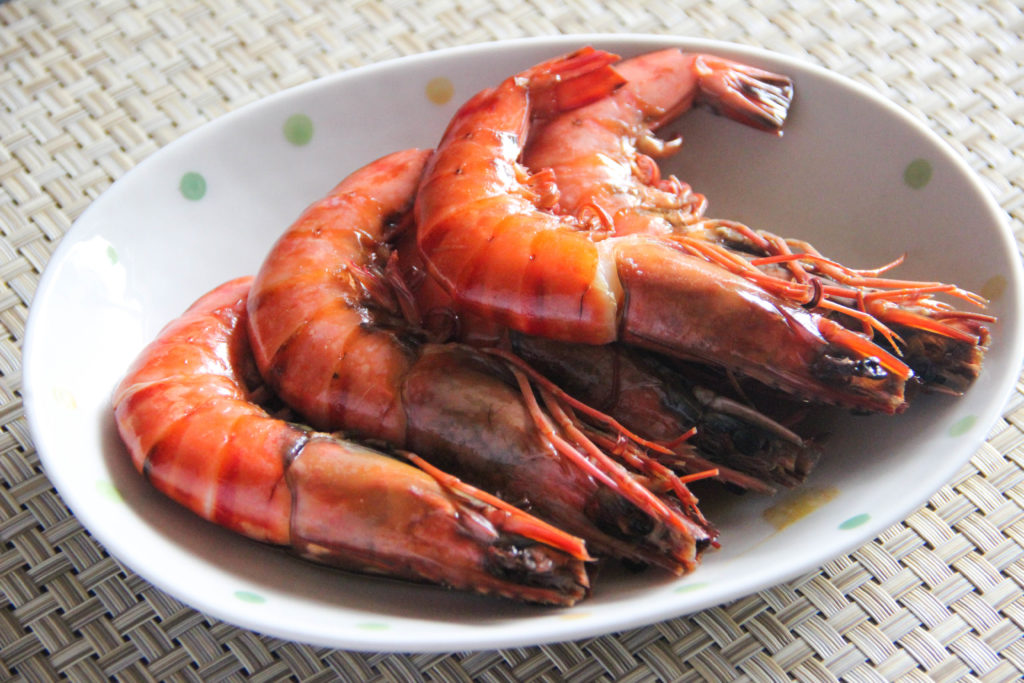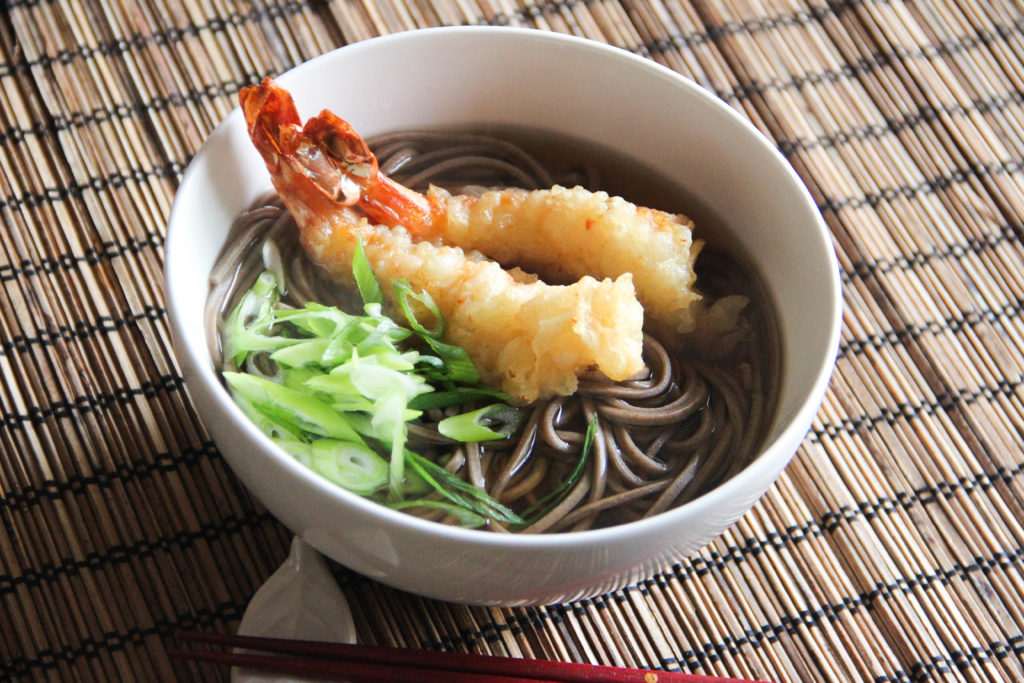Onigiri are rice balls with some filling and wrapped with Nori roasted seaweed. It is a soul food for Japanese people, and it can be eaten in any kind of occasion. You may want to eat Onigiri as everyday breakfast or lunch, but you can bring it to a picnic or hiking since it travels very well. It is easy to make and easy to eat.
Kombu Tsukudani is thinly cut Kombu seaweed that is cooked and seasoned mainly with sugar and Soy Sauce. Kombu Tsukudani is a great accompaniment for plain Steamed Rice for its strong sweet and salty flavor. You can use it to top a bowl of rice or put it in your Onigiri rice balls.
Macaroni Salad is macaroni mixed with vegetables and mayonnaise, very similar to American macaroni salad. Because Japanese mayo has a very different flavor from mayo in the US, Japanese Macaroni Salad tastes quite different, just like Japanese Potato Salad. It is a very good side dish for Yoshoku (western style dishes) such as Hamburger Steaks and Menchi Katsu.
Cabbage Roll is ground meat stuffed in cabbage leaves and cooked in seasoned soup. It is one of the most popular western-style Japanese foods of all time, just like Hamburger Steak and Tonkatsu. Cabbage and ground meat are cooked in a mild but flavorful soup until very soft. This tasty and nutritious dish is a favorite dinner item for any age.
Daifuku Mochi is rice cake with Anko, sweet red bean paste, inside. Daifuku Mochi is one of the most traditional but very popular Japanese sweets. It was first made almost 700 years ago, but not as a sweet dessert. Then, sugar was rare, but Daifuku became more like today’s when sugar was more readily available to people (even though it was still very precious) 200 years ago. Today, you can buy Daifuku Mochi everywhere in Japan, from Japanese sweet shops to convenience stores. People like us living outside Japan may not have such access to this delicious dessert, however, once again, we can make it at home! Homemade Daifuku is so soft and yummy, and surprisingly easy to make if you follow the steps. Once you taste it, you may not want store-bought ones any more anyway.
Yaki-Imo is baked Japanese sweet potatoes. Japanese sweet potatoes, Satsuma Imo, usually have purple skin with white flesh, but the inside turns bright yellow when it’s baked. Japanese sweet potatoes in winter are so sweet just by themselves that there is no need to add any sweetener or anything. Yaki-Imo is a very simple and wholesome snack for anybody at anytime.
Chanko Nabe is a very popular style of hot pot dish in Japan. A lot of vegetables and meat can be cooked in seasoned broth at the same time at the dinner table as you eat. It is an easy and great hot dish in winter time.
Buri Daikon is cooked yellowtail and Daikon radish in a seasoned broth. This dish is a winter taste in Japan since both main ingredients, yellowtail and Daikon, are in season in winter.
Shrimp Umani is cooked shrimp, with heads still on, in strongly seasoned broth. It is a part of Osechi Ryori, the traditional Japanese New Year feast. There are a lot of kinds of dishes for Osechi, but Shrimp Umani is one of the main dishes while many other Osechi dishes are vegetables. Because of its bright red color and heads and all, Shrimp Umani is the icing on the cake in Osechi Ryori.
Tempura Soba is hot Soba noodle soup with Tempura. Light Soba noodles in tasty soup could be a great everyday lunch. With Tempura, the dish is hearty and fulfilling enough to be dinner too. There are a lot of Soba restaurants to get Tempura Soba in Japan (lucky for people there). Even if you don’t have such a restaurant in your town, don’t worry, you can easily make this tasty and authentic dish yourself at home.
